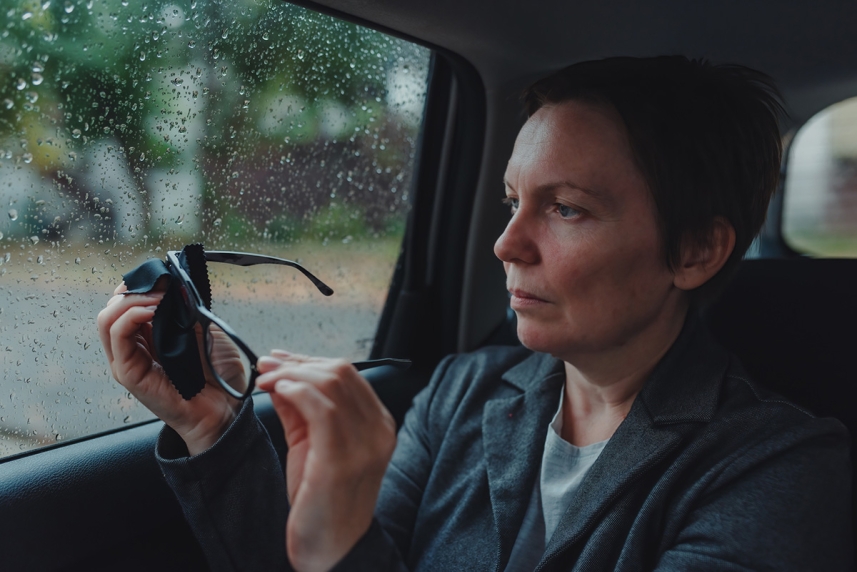How a person can protect their glasses from the rain
Ever wonder how to shield glasses from the elements? Find out.

A lot of people wear glasses. The Vision Council estimates that 93% of adults in the U.S. regularly wear some form of eyewear.1
It’s common for people who wear glasses to get caught in the rain. That might be because of where they live and what season it might be. Maybe their glasses get wet outside or fog up when they run inside to hide. There may be questions about how to store them, too.
The good news: People can protect their glasses from rain and keep them doing what they’re supposed to: helping them see clearly. Here are 4 potential tips to follow to keep glasses protected in the rain.
Need a new pair of glasses? In 3 easy steps, you could have a new pair on the way. Check your vision coverage, select your favorite frames, then check out. Done!
1. Choose an anti-water or -fog coating
One way to protect a person’s glasses from the rain is to choose one of the following types of special wipe or spray-on coatings:2
- Hydrophilic. This spreads water droplets out evenly across a lens’ surface. It can help make glasses’ lenses clearer, especially when it’s humid outside.
- Hydrophobic. This makes water bead up and roll off the lens’ surface. It also leads to a cleaner lens altogether. It can help with both rain and fog.
It’s important to re-apply the sprays or wipes as needed. This is especially important if a person is constantly in and out of wet conditions.
2. Use a microfiber cloth once indoors
Even with special coatings, a person’s glasses can still get wet or have clarity issues. That’s where a microfiber cloth can come in handy. A person can carry one in their bag or pocket. They can use it to wipe off their glasses. If there’s any dirt or debris on the lenses, try using lotion-free dish soap and warm water to get them ultra-clear.3
A microfiber cloth won’t scratch or damage the lens’ surface. It will also leave the glasses streak-free.
3. Pick lenses made from a durable material
Thunderstorms can be intense. That’s why it’s a good idea to have glasses with durable lenses. For example, someone might bump their glasses while running for cover. Their glasses might also slide off a person’s face, because they’re wet.
A few options for materials might include:
- Polycarbonate. This lens material is recommended by eye care providers for young children and active adults. It’s a strong, thin, lightweight and safe choice. It also has total ultraviolet (UV) protection against the harmful rays of the sun — once it gets sunny after that storm.4
- Trivex. It’s a strong material that can protect the eyes from a sudden impact. It’s 8% lighter than polycarbonate and great for children and active people. It also comes with UV protection.5
4. Find the right case
Let’s say a person isn’t wearing their glasses but carrying them in a rainy situation. It’s a good idea to store them in a protective case. That could be a soft or hard case. This will keep them from getting wet and help keep them from getting damaged.
Ordering new glasses online is easy with our virtual mirror. Skip the store and try them on now.
Sources:
- The Vision Council estimates U.S. optical industry size at $65.6 billion in 2023 market insights report The Vision Council, January 2024.
- Hydrophilic anti-fog coating versus hydrophobic lens coatings Hydromer, March 2024
- How to clean your eyewear The Vision Council.
- Plastic vs. polycarbonate lenses: Advantages and disadvantages All About Vision, last updated November 2023.
- Trivex lens material The Ohio State University College of Optometry.


